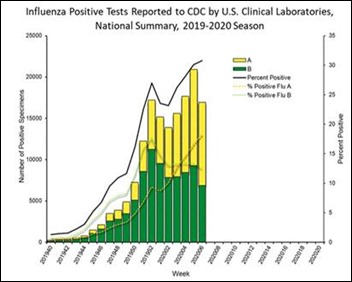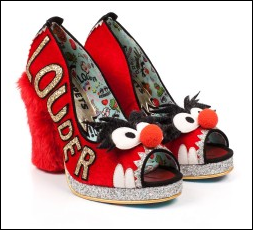Curbside Consult with Dr. Jayne 2/24/20
A new report from the UPMC Center for Connected Medicine finds that only four in 10 providers feel that digital technology is being successfully integrated into the overall patient experience. The team at UPMC surveyed more than 130 health systems and found that many of them are experiencing challenges around the costs associated with purchasing, implementing, and maintaining digital tools. Integration remains a concern due to interoperability issues with third-party applications. Unsurprisingly, organizations are ranking patient engagement tools as high priority projects and hope they will assist with major clinical initiatives such as chronic disease management.
According to Katie Scott, vice-president of digital strategy and innovation, UPMC Enterprises, “Patients now assume they’ll have the same digital experience in healthcare that they get everywhere else in their lives, and they’re dissatisfied when we don’t deliver. Increasingly, if hospitals and health systems can’t provide a feature-rich and seamless digital experience for their patients, those individuals are going to look elsewhere for care.”
Based on recent experiences with two patient portals, I can’t say I disagree. One of the portals took me in circles as I tried to figure out what was going on with a bill for a date of service that occurred more than eight months ago. Apparently the organization’s Division of Ophthalmology follows billing rules from some other universe, and according to the folks I had to call for help, these delayed bills are pretty much routine.
The other one allowed me to access data from two practices, both of which had different access settings for my information. While one practice had shared full office notes and lots of discrete data to the portal, the other only had lab results, but there were no annotations on the results. I ended up clicking dozens of links trying to figure out what my blood pressure might have been running over the last couple of years, and ultimately wound up with two useful data points and a lot of frustration. Although more than 80% of organizations cite the patient portals as one of the top three currently implemented technologies, it’s unclear how much benefit patients and practices are truly receiving from them.
The UPMC Center for Connected Medicine is a joint venture between UPMC, GE Healthcare, and Nokia. Other findings of the survey include: more than 75% of organizations are offering at least one digital health tool to patients, with 25% offering four or more tools; of the quarter of organizations who haven’t deployed digital health tools, 97% of them have plans to do so; half of respondents labeled digital tools as critical or high priority, with larger organizations more apt to call them critical; and less than one-third of organizations agreed that their organizations are able to deliver a digital experience that is “on par with the best digital consumer experience.”
There have been a couple of articles discussing the results of the report, and all of them focus on the perceived advantages held by organizations that are leading with digital health tools. They also predict that organizations that don’t embrace digital tools will be left behind as patients vote with their feet to move to organizations with a more seamless experience.
This reminds me of how hospitals were behaving years ago as they all competed based on their beautiful birthing suites, on-demand dining, and bedside entertainment systems. They may have gotten people to look twice, but I’m not sure it really made a difference in how patients selected their hospitals,since often that decision is driven by insurance contracts or where physicians have chosen to be on staff.
As patients have become consumers and people are increasingly sensitive to the cost of healthcare, I’d like to propose a new paradigm in hospital competition. Rather than pushing for just price transparency and infection rates, let’s get some real competition. Let’s get hospitals to publish their data on accurate billing, clean claims, and responsiveness to patient inquiries. In addition to your wait time in the emergency department, what is your wait time when you have to call about a bill from six months ago that finally dropped? How quickly can you deliver medical records upon request? How do your score on the ability to deliver those records in the format patients want?
Let’s create some metrics for care team communication with families, adequate discharge planning, and appropriate end-of-life decisions and get them circulating in the community. As far as other metrics, how quickly does someone answer the patient call light/bell, and how efficiently can someone help an elderly or immobilized patient to the bathroom? Let’s get that metric up on a billboard just like the emergency department wait times.
For anyone who has ever been an inpatient or had to closely take care of a hospitalized family member, let’s add some other ones like timeliness of medication administration, the percentage of time that handwashing is done properly, and the speed with which staff can silence or otherwise address the alarm on an IV pump.
I’m now at the point in my career where I’ve spent more time as a clinical informaticist than I did as a “regular” physician, and trust me, I do love the technology side of things. But as we are with so many things in our society, we’re focused on the wrong things. Is digital technology just a distraction from other issues? Are we trying to use it as a proxy for the actual healthcare that our patients deserve? Do patients really want an interactive, immersive experience or do they just want to get out of the hospital without a hospital-acquired infection? Do they really need online bill pay or would they be much happier with a bill that was simply understandable and accurate?
I’m curious what others think about this and what your organization’s relative spend is on digital patient engagement versus what many of us would consider the staples of running a healthcare organization. Do you spend more on technology than infection control? How does it compare to salaries for nursing staff and other critical patient care resources? Are we just experiencing the healthcare equivalent of bread and circuses? Leave a comment or email me.

Email Dr. Jayne.




















"most people just go to Epic" that's a problem because then EPIC becomes a monopoly in healthcare, if it isn't…